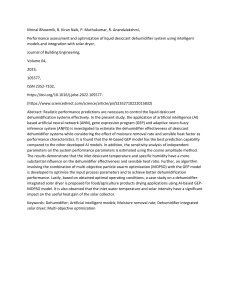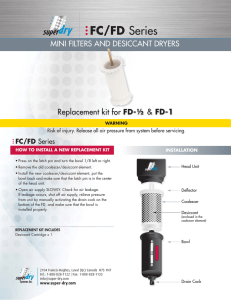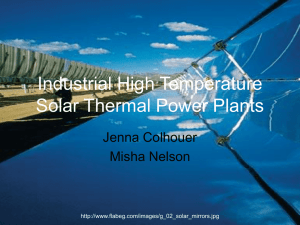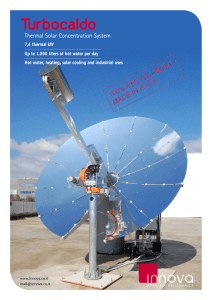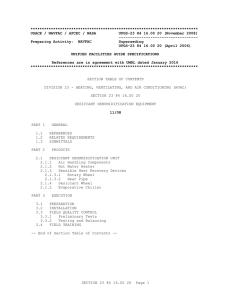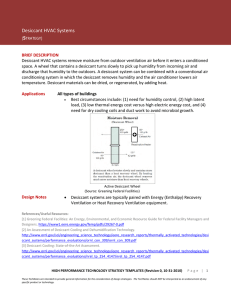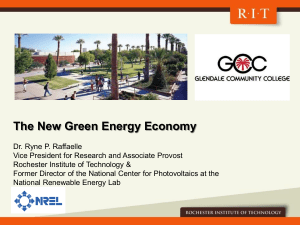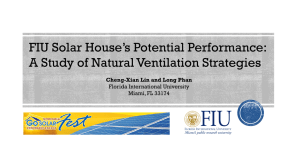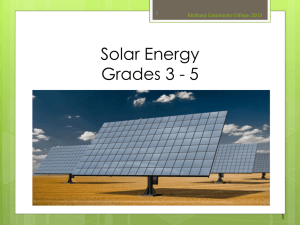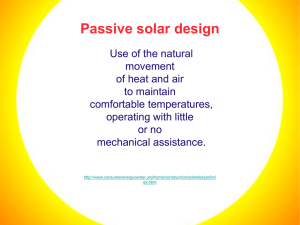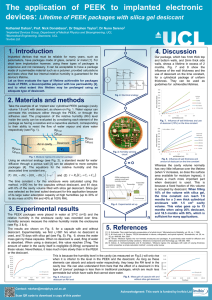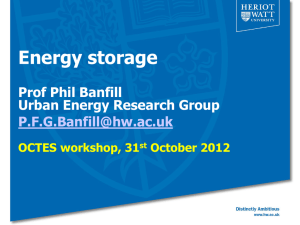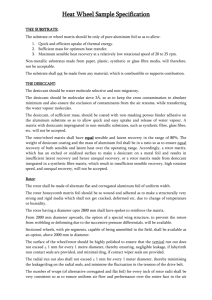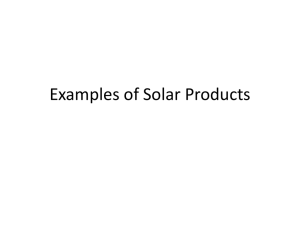Solar Air Conditioning via Desiccant Cooling
advertisement
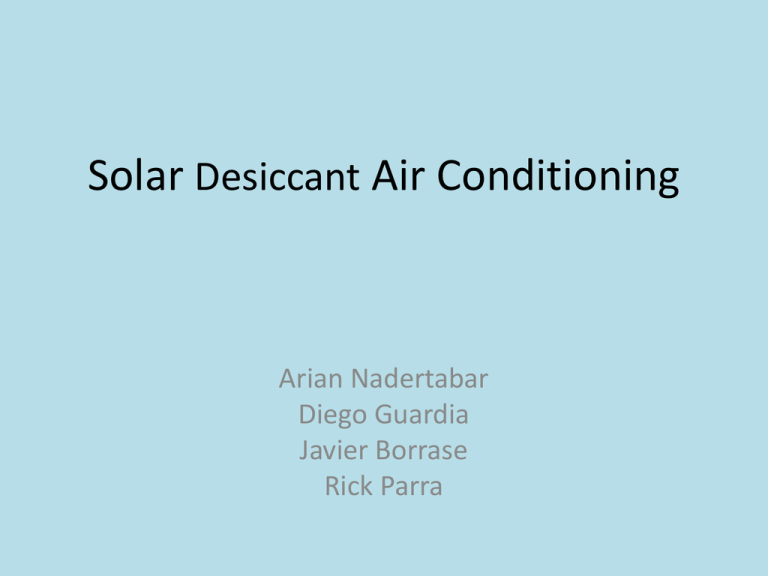
Solar Desiccant Air Conditioning Arian Nadertabar Diego Guardia Javier Borrase Rick Parra External Parameters • • • • Outdoor Temperature Indoor Temperature Outdoor Relative Humidity Indoor Relative Humidity *How big is the space you are attempting to cool? Desiccant Wheel • Desiccants (also known as hygroscopic substances) can be solid or liquid • Silica Gel • Rotates Slowly • Takes in warm humid air on the supply inlet (bottom) • Takes in hot humid air from the reactivation inlet (top) • Regenerates at high temperatures (250 degrees F) Desiccant Wheel Thermal Wheel • Lower Chamber: Recovers thermal energy from the dried (processed) air which had run through the desiccant • Lower Chamber: Cools processed supply air • Top Chamber: Preheats the reactivation air that will be used to regenerate the desiccant Air to water heat exchanger (Radiator) • Passes thermal energy from the solar heated water to the preheated air from the thermal wheel • Water Glycol Solution or pure glycol? Water-Glycol Solution: 5% Water, 95% Glycol Constraint: Water boils at 212 degrees Fahrenheit Solar Panel: • Solar apparatus acts as a solar water heater • Is the use of the solar panel economically feasible? • Heat source can come from anything theoretically (i.e. heating coil) Miscellaneous • 80 Degree Air with R.H. of 60 % with Soaked Pad at 70 degrees could yield 75 degree air with R.H. of 76 %. • 85 Degree Air with R.H. of 60 % with the same conditions would yield 75 degree air with R.H. of 111 % (impossible!!!) • Dry air 85 degrees Fahrenheit good candidate for evaporative cooling for terminal stage of the supply chamber. Conclusion • Difficult to Model • Difficulty of achieving steady-state • Assume Steady State for calculations Questions?
